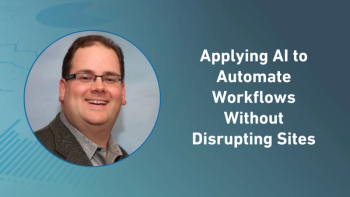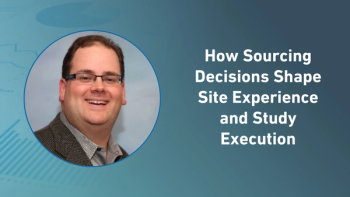
Leveraging Real World Evidence to Enhance Safety Monitoring in Obesity Studies
Shipra Patel, global therapeutic area section head, endocrinology, global head, pediatrics, Parexel, explains how real-world evidence is helping refine patient targeting and improve safety monitoring in obesity and endocrinology clinical trials.
In an interview with Applied Clinical Trials, Shipra Patel, global therapeutic area section head for endocrinology and global head of pediatrics at Parexel, discussed the evolving landscape of obesity drug development and what it takes to stand out in a field crowded with more than 90 active sponsors. Patel emphasized the importance of therapeutic depth, cross-functional collaboration, and the strategic use of real-world evidence to design safer, more effective clinical trials—particularly as GLP-1 therapies expand into new indications such as Alzheimer’s, addiction, and MASH. She also shared how Parexel is adapting its clinical infrastructure to meet the growing complexity of this space, while keeping long-term patient engagement and global data integrity at the forefront.
ACT: Can you share an example of how Parexel has applied real-world evidence to refine trial design or enhance safety monitoring in the obesity or endocrinology space?
Patel: Real-world evidence is invaluable when it comes to identifying patient populations for clinical trials. One example involved a proposal for patients who had previously been on GLP-1s or were currently taking them, with the goal of evaluating whether they could switch to another obesity medication.
To support this, we needed to locate large concentrations of patients already on these treatments who might be willing to make a switch. We used real-world data sources, such as claims data and TriNetX, to identify where these patient pools existed.
However, a common challenge is that many sites work with referred patients. These individuals are often new to the site, so gathering detailed medical histories can be difficult. Still, this approach helps us explore trial designs that target non-traditional obesity populations and consider how to effectively bring them into studies.
Full Interview Summary: With more than 90 sponsors now driving obesity drug trials, standing out in this competitive space requires deep therapeutic expertise and cross-functional coordination. According to leaders at Parexel, the key differentiator for a standout research partner lies in a nuanced understanding of the evolving obesity drug market—particularly GLP-1 therapies. These compounds, initially developed for diabetes and obesity, are now being investigated for a broad range of indications including MASH, Alzheimer’s, addiction, Parkinson’s, and sleep apnea. To support this complexity, Parexel has implemented a GLP-1 task force—an internal expert group that helps clients stay competitive across the drug development lifecycle.
To handle GLP-1 trials spanning multiple therapeutic areas, Parexel relies on a therapeutically aligned model, connecting area leads across endocrinology, cardiology, psychiatry, and pulmonology. These cross-disciplinary teams collaborate to translate clinical trial learnings between indications and optimize study designs for similar mechanisms of action.
Real-world evidence (RWE) plays a central role in addressing the safety concerns linked to rising off-label GLP-1 use, even among patients with normal BMI. RWE shows many patients discontinue treatment early, often due to costs or tolerability issues—particularly gastrointestinal side effects. Flexible dosing, even below the maximum level, may still yield metabolic benefits, offering a new lens for trial design.
Parexel has leveraged RWE to identify non-traditional patient populations and refine trial protocols—for instance, by pinpointing regions with high use of GLP-1s to aid recruitment for switch-over studies. Looking ahead to 2050, long-term patient retention, better compliance tracking, and global data accuracy will be essential to compare therapies and identify long-term leaders in the obesity space. Innovations in AI and global patient engagement will be critical in sustaining participation and capturing meaningful safety outcomes.
Newsletter
Stay current in clinical research with Applied Clinical Trials, providing expert insights, regulatory updates, and practical strategies for successful clinical trial design and execution.




